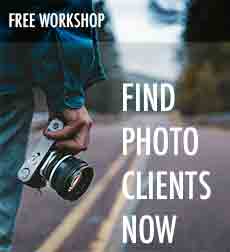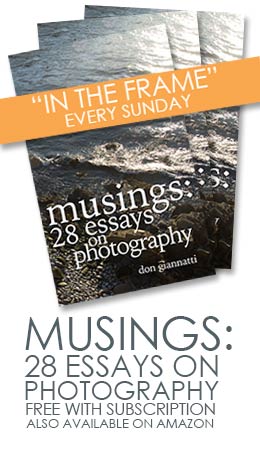
Recently an article caught my attention over at TIME. “Last Launch: Dan Winters and the Shuttle Program. TIME had commissioned Winters to photograph the final launch of the Space Shuttle and they showed a few of the images that will soon be in the book.
The images are outstanding, and exactly what you would expect from a photographer like Winters, but it also got me thinking about gear.
And yeah, he used a lot of gear.
The work begins the day before launch, when he positions up to nine cameras as little as 700 ft. (213 m) away from the pad. Each camera is manually focused and set for the particular shot it is meant to capture, and the wheels of the lens are then taped into position so that they can’t be shaken out of focus when the engines are lit. Electronic triggers—of Winters’ own devising—that do react to the vibrations are attached to the cameras so that the shutter will start snapping the instant ignition occurs.
To prevent the cameras from tipping over on their tripods, Winters drills anchoring posts deep into the soil and attaches the tripods to them with the same tie-down straps truckers use to secure their loads. He also braces each leg of the tripod with 50-lb. (23 kg) sandbags to minimize vibration. Waterproof tarps protect the whole assembly until launch day, when they are removed and the cameras are armed.
That is a lot of seriously expensive gear.
But I also suspect that many other photographers have access to that kind of gear. I don’t know for sure, but would expect that Winter’s rented a lot of that gear, or it was furnished through a Pro Shooter service of the camera manufacturers.
But I also suspect that gear is not what Dan was hired to bring.
He was hired to shoot this unique moment in American history because of the vision he brings to the shoot. Having the gear is cool, but KNOWING where to put it to get dramatic, amazing, story telling shots… that is the vision thing.
And yeah, it takes a long time to develop that.
Or not.
Depends on the photographer. Depends on the quest. Depends on how much filtering and listening to critiques and forcing through places walls of doubt he/she is willing to do.
Having gear without the vision is like having a Steinway without knowing how to play piano. Will the Steinway help a young player become better? Will it help a composer create ‘better’ sonatas? Will a floundering jazz pianist with limited talent suddenly become gifted with unlimited improvisational skills just after acquiring a Steinway?
Of course not.
Nor will a writer create better fiction on a new version of Word, or a dancer with a shiny new barre.
Does good or great gear help the performance? Of course! But it doesn’t mean that performances on lesser gear would be bad. The photographer/musician/writer would have to be so sure of their vision, that the less than perfect tools would be used to their best level to present THE best level of art from the artist.
An writer may take 3 times longer to ‘type’ out the story on an old typewriter, but the story itself will still be the story that was in the mind of the author. The composer may be limited to working with a battery powered keyboard with a limited range, but the sonata produced would still be the same piece as she had imagined in her mind.
And a photographer with vision will be able to create images with nearly any camera or gear given him. It may not have the resolution that he is used to. It may be a different crop factor than he is used to. It may make only a small file, or be incapable of flash, or have ergonomics that are strange…
But the vision is within the photographer who then takes the limitations of the gear and works within those limitations to make the image. The image they see in their head. The image they see in their head with the restrictions of the gear they have, that is.
I often hear photographers complain about people who say to them “Wow, your camera takes really good pictures.” They want to insist that it is the photographer, they themselves, that made the photograph.
But then turn around and make similar, although more technically fluent, statements about having this lens or that lens. “Kit” lenses are reviled. Fast glass is the quest. Bigger sensors, more FPS, ISO’s in the millions…
Meh. I am gonna go with “Photographers make the photograph.” A solid photographer could take a good Point and Shoot on vacation and blow people’s minds with the images.
And a photographer with no ideas, no vision and no craft will NOT be able to make ‘better’ photographs with the new gear. They will be bigger file sizes and take up more HD space, but still, well… suck.
Ask yourself this… if a shooter with no vision had been given the exact same gear as Winters, would they have brought back the same or equal quality of imagery? I know my answer would be no.
Stop using lack of having a ____(gear)____ as an excuse for not shooting. Or not shooting well.
Or not knocking it out of the park and blowing people’s minds with your work.
That’s the truly difficult and terrifying part of photography… the part where we have to admit that it really does come down to us. Our vision. Or lack of.
But that is something we can work on no matter what gear we use.
Shoot, shoot, shoot. Critique. Repeat.
——–
Yes, there are times when the gear itself is PART of the vision. You cannot fake a Tilt/Shift lens. And if you want to shoot underwater you MUST have good waterproof gear. But we aren’t talking about this subject that granularly.





Makes me think of a quote from one of David Vestal’s books: “Equipment may make pictures possible or impossible, but it seldom makes them better or worse.” Of course he wrote that before the megapixel race, but there’s still something in it.